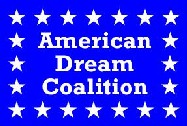
 |
|
|
Congestion & the American DreamCongestion is the biggest problem facing America's urban areas. Polls consistently report that urban residents complain more about congestion than any other urban problem. According to the Texas Transportation Institute's annual survey of urban congestion, the costs of congestion have more than quadrupled in the last twenty years. Today, congestion wastes nearly 6 billion gallons of fuel and costs American travelers more than $60 billion each year. Smart-growth advocates consistently blame congestion on "sprawl," their pejorative term for the low-density suburb inhabited by half of all Americans. They also claim that their prescriptions of higher densities, investments in rail transit instead of highways, and traffic calming will reduce congestion. Yet the real goal of smart growth is to further increase urban congestion in order to convince people to stop driving. Density is no more a solution to congestion than rain is a solution to flooding. The real solution to congestion comes from an understanding of its causes, which are centered around highway pricing. Highways are much like telephone networks in that they are more heavily used during some periods of the day than others. As long as telephone networks relied on copper wire, peak period demand threatened to congest the networks, giving people signals that circuits weren't available. Phone companies resolved this by charging more for phone service during peak periods. But the recent installation of fiber-optic networks has created a huge surplus in capacity, so many phone services no longer charge more for peak-period use. Highways history has gone in the opposite direction. Up until the 1950s, most regions had sufficient road capacity to meet demand. Charging for roads using a flat fee in the form of gasoline taxes made sense. Now that most cities have at least some rush-hour congestion, gas taxes work no better than if supermarkets charged for groceries by simply renting their shopping carts. To make matters worse, gas taxes, which are based on cents per gallon, haven't kept up with either inflation or today's fuel-efficient cars. When you fill your gas tank today, you only pay half as much for every mile you drive as your parents paid in 1960. Thus, increasing congestion in the last two or three decades is in large part due to inadequate highway funding. This problem is exacerbated by increasing diversions of highway user fees to mass transit and other purposes. These diversions, in turn, make voters suspicious of proposals to increase gas taxes. The Taxpayers League of Minnesota pointed out that a proposed gas tax increase in that state would raise $1.8 billion in revenues over the next decade, but that diversions to mass transit were expected to cost $4.5 billion. Clearly, we need a new system of highway funding that both provides adequate revenue and more accurately prices roads. That means some form of tolling. While tolling was once undesirable because of congestion at the tollbooth, today's electronic tolling resolves that problem and makes it easily possible to charge more for the most expensive roads or the busiest times of the day. This doesn't mean that every mile people drive has to be tolled. Gas taxes, perhaps at reduced rates, can still be used to pay for local streets (which rarely have peak-period congestion) and maintenance of at least some existing roads. But tolls should be used to pay for most if not all new highway construction, including the addition of new lanes onto existing freeways and other arterials. In 2003, Robert Poole of the Reason Foundation and Kenneth Orski of the Urban Mobility Corporation published an intriguing proposal that promises to allow anyone to travel in major urban areas without having to deal with congestion. Their proposal calls for turning existing carpool or high-occupancy vehicle (HOV) lanes, many of which are underutilized, into high-occupancy/toll (HOT) lanes. Such HOT lanes would be free for "super-high-occupancy vehicles," generally meaning three or four people per car depending on local conditions, and tolled for everyone else. The tolls would vary depending on demand and would be set high enough to keep traffic flowing at highway speeds. Another idea is public-private partnerships in which private companies would build roads on public rights of way and pay for the construction with tolls. After the road is paid for, it might be turned over to the state or it might be maintained by the company using toll revenues. Innovative ideas such as these, which are based on incentives rather than penalties for driving, will do far more to reduce congestion than land-use policies such as density and mixed-use developments. |